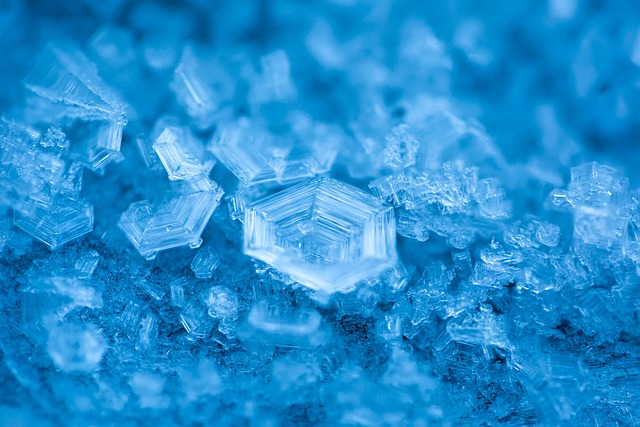Chronic inflammation, exacerbated by stress and hormonal imbalances, can be mitigated through cold therapy like ice baths and cold plunges. These methods stimulate the nervous system, releasing hormones (cortisol, norepinephrine, endorphins) that reduce inflammation, boost metabolism, regulate hunger, and improve recovery. Regular cold plunges enhance physical performance, mood, and insulin sensitivity. Integrate into wellness routines for optimal hormonal balance and overall well-being.
Looking for a natural way to reduce inflammation and boost hormonal balance? Cold plunges, or ice baths, might be your answer. This practice involves briefly exposing yourself to extremely cold water, triggering a cascade of beneficial physiological responses. In this article, we explore the science behind cold therapy’s impact on inflammation and hormones, its numerous benefits, and how you can safely incorporate cold plunges into your routine for optimal health.
Understanding Inflammation and Its Hormonal Link
Inflammation is a complex physiological response that plays a vital role in our body’s defense mechanism. It is a natural process triggered by various factors, including injuries, infections, or irritants, aiming to protect and repair damaged tissues. However, chronic inflammation can be detrimental, leading to various health issues. This persistent state may result from hormonal imbalances, where hormones like cortisol, often termed the ‘stress hormone,’ play a significant role in regulating inflammatory responses.
When stress is prolonged, it can disrupt the delicate hormonal balance within our bodies, causing elevated cortisol levels. This hormonal shift can trigger an overactive immune system and increased inflammation. Incorporating cold therapy, such as cold plunges or ice baths, has emerged as a powerful tool to combat this. By exposing the body to extreme cold, these practices may help reduce chronic inflammation and support the restoration of a healthier hormonal equilibrium, thereby promoting overall well-being.
The Science Behind Cold Plunges
The science behind cold plunges reveals a fascinating interplay between the body and extreme temperatures. When you subject yourself to a cold plunge, whether it’s immersing in icy water or taking a shower with freezing blasts, your body responds by triggering a series of physiological changes. This response is driven by the nervous system, which signals various hormones to kick into action. One key hormone affected is cortisol, often referred to as the stress hormone. In response to cold, cortisol levels can decrease, leading to a reduction in inflammation throughout the body. This anti-inflammatory effect is particularly beneficial for conditions like arthritis and muscle soreness.
Additionally, cold therapy has been shown to boost hormonal balance by influencing the release of other key hormones. For instance, exposure to cold can stimulate the production of norepinephrine, a hormone that plays a crucial role in energy regulation and fat burning. It also stimulates the release of growth hormone, which supports muscle repair and overall cellular regeneration. These hormonal shifts contribute to the perceived improvements in physical performance and recovery after a cold plunge session. The scientific evidence suggests that incorporating cold plunges into your wellness routine could be a powerful tool for promoting both physical and mental well-being.
Benefits of Cold Therapy for Hormonal Balance
Cold therapy, such as cold plunges or ice baths, has gained attention for its potential to revolutionize hormone regulation in the body. When exposed to cold temperatures, our bodies initiate a series of physiological responses designed to protect core temperature and promote survival. One significant outcome is the stimulation of the nervous system, which releases various hormones like norepinephrine and endorphins. These hormones play a crucial role in balancing our internal environment by reducing stress responses and promoting feelings of calm and well-being.
Additionally, cold therapy triggers a process known as brown adipose tissue (BAT) activation. BAT is a type of fat cell that generates heat through thermogenesis, which can help regulate metabolism and hormonal cues related to hunger and energy balance. This effect may contribute to improved insulin sensitivity and better control over hormones that influence weight, appetite, and overall metabolic health. By boosting hormonal balance with cold therapy, individuals may experience not only reduced inflammation but also a more optimized physiological state, enhancing their body’s ability to maintain homeostasis.
Incorporating Cold Plunges into Your Routine
Incorporating cold plunges into your daily or weekly routine can be a game-changer for reducing inflammation and supporting your body’s natural healing processes. Start with a simple ice bath or a quick dip in cold water for 10-15 minutes. This shock to your system triggers a cascade of beneficial responses, including the release of endorphins that boost mood and reduce pain. Regular cold plunges can also help regulate your body’s hormonal responses, specifically promoting higher levels of cortisol during stress and balancing insulin sensitivity for better blood sugar control.
Consider integrating this practice into your self-care routine after workouts or on rest days. The cold temperature helps constrict blood vessels, reducing swelling and inflammation in muscles. Moreover, the exposure to cold can enhance mitochondrial function, boost metabolism, and improve overall energy levels. As you adapt, explore more advanced methods like alternating between hot and cold showers or using cold therapy devices designed for at-home use. Remember that consistency is key; even short, regular cold plunges can make a noticeable difference in your body’s ability to fight inflammation and maintain hormonal balance through cold therapy.
Cold plunges offer a simple yet powerful tool for boosting hormonal balance and reducing inflammation. By immersing yourself in cold water, you can trigger a cascade of beneficial physiological responses, from enhancing circulation to regulating stress hormones. Incorporating regular cold therapy into your routine is an accessible way to support overall health and well-being. Embrace the benefits of this ancient practice and witness its positive impact on both your body and mind.
